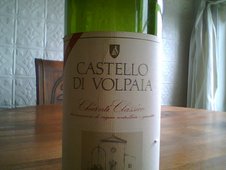More new spirits and associated liquor products are introduced at the annual Tales of the Cocktail convention in New Orleans than at any other place. This year was no exception. I think I tasted more new things this past July than at any previous Tales. Here are a few of the libations that will soon find their way onto the shelves of your local liquor store.
- Fee Brother Black Walnut Bitters: Joe Fee always arrives at each Tales with a satchel full of bottles of the company's latest invention. This year's addition: Black Walnut Bitters. Not sure of the applications, beyond offering a nice change-up for Angostura in an Old Fashioned. I'll wait for mixologists to figure that one out.
- Lillet Rose: Building on the Lillet line of white and red aromatized wines by 50% is the new Lillet Rose. It is made by blending the wines that form the base of Lillet Blanc and Lillet Rouge, and infusing it with "Bordeaux fruits." You won't be able to get this in the U.S. until April 2012.
- Pierre Ferrand 1840 Original Formula Cognac: According to the Ferrand people, this new iteration of their Cognac was inspired by an old bottle of original Ferrand that was bought at auction, and was selected (from among many such old bottles) by Ferrand cellar master Christian Guerin and cocktail historian David Wondrich as being the best and closest example of the sort of spirit that was put out in the 1800s. The more questions I posed as to how such a guess at the formula was hazarded, the less I understand the process. But this much is clear: it is bottled at 90 proof, higher than most Cognacs, and in keeping with the proofs observed in those times; it is fully intended to be a mixable Cognac, to be used in cocktails; and it tastes quite good.
- Drambuie 15: This ancient Scottish liqueur has been trying to find a place for itself in the new drinking world for a few years now. They redesigned their bottle a couple years back, making it look less like Drambuie and more like a Scotch vessel. Now they've come out with the first-ever new expression of the producer. To appeal to Scotch fans who find old Drambuie too sweet, they've devised a drier expression that uses less honey and only employs whiskies 15-years-old or older. They're going to market it the way you would a Scotch, and are pushed a drink that uses half Drambuie and half Drambuie 15. There's a way to move product!
- Hochstadter's Slow and Low: This is the latest from Rob Cooper, the man people who brought the people St. Germain and Creme Yvette. It's his take on an old-style Rock & Rye, which is to say, Rye whiskey sweetened with rock candy syrup. All the famed 19th century American mixologists mention this potion it at one point or another. Slow and Low uses six-year-old rye, infused with citrus, honey and horehound, and bottles at 98 proof. It could be argued that this is basically an Old Fashioned in a bottle, though much hotter and much sweeter. It's made in Philadelphia. Unlike the high-toned St. Germain and Creme Yvette, the rauchy marketing for Slow and Low aims low. (Check out the name.) No gracious sipping here. Straight shots—the "full pull" mark on the souvenir shot glass I was given was at the 2 1/2 ounce mark.
- Merlet Liqueurs: The Cognac-based Merlet clan has been making liqueurs for 150 years. Their line is just now reaching out shores. I tasted through their line, and found not a dud in the bunch, with the rich, dense, bright Creme de Framboise and light, but strong Creme de Poire standouts. The Creme de Cassis is infused with the same fruit twice, with the result decidedly potent.
- Brugal 1888: The latest from the venerable Dominican rum distiller. It’s a blend of rums aged 5-14 years, first aged in American white oak and then in Sherry Oak casks from the same source that The Macallan Scotch Whisky uses in Spain. In case you're wondering, yes, Macallan and Brugal are owned by the same corporate body. 1888 is being marketing as a premium sipping rum. It certainly is a smoothy, all caramel, oak and vanilla and just a little spice.




